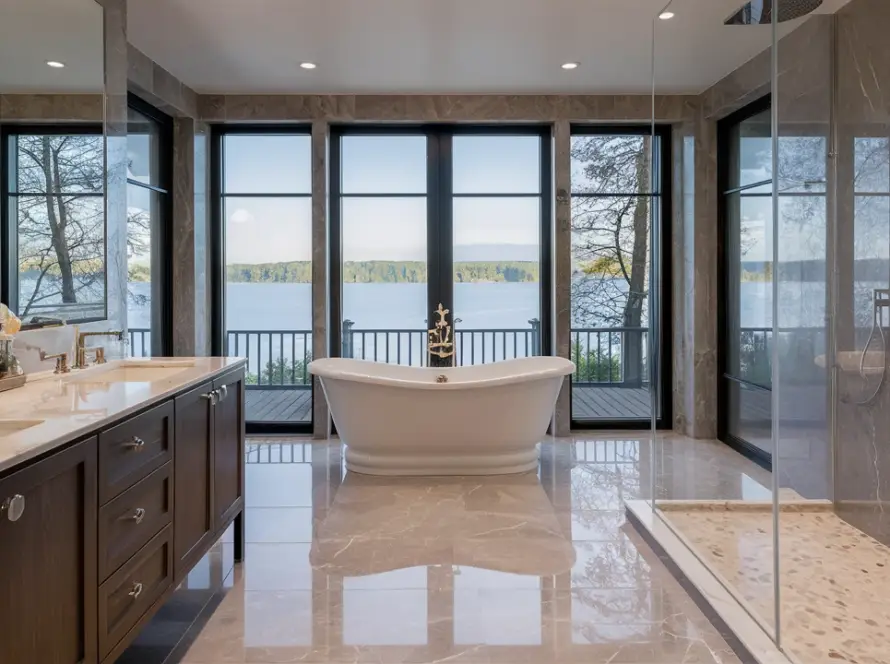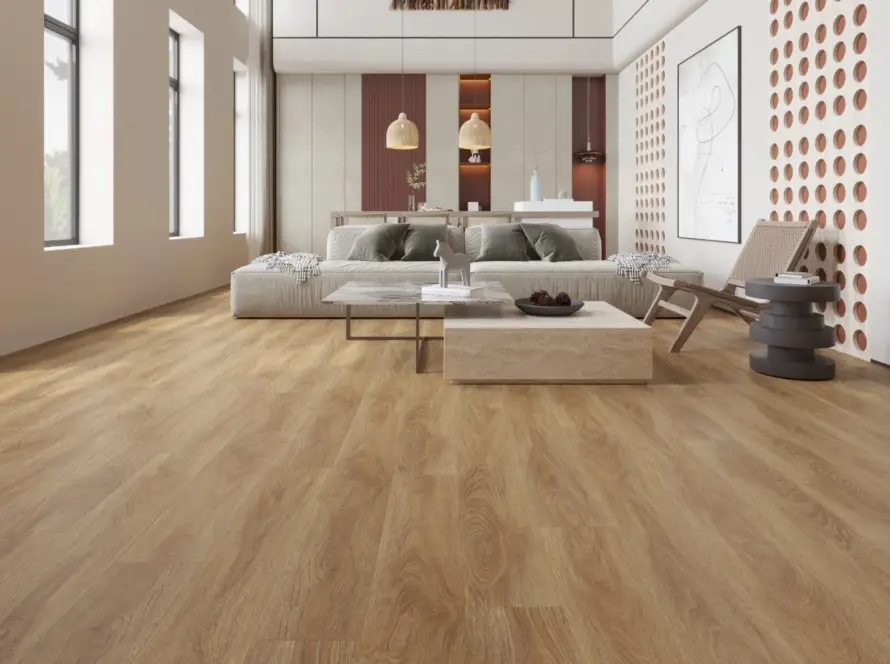Choosing the right flooring for your home can be a daunting task, especially with the myriad of options available. Two popular choices are SPC (Stone Plastic Composite) and laminate flooring. While they may look similar at first glance, they have distinct differences that can significantly impact their performance and suitability for various environments.
In this article, we will delve into the core differences and advantages of SPC and laminate flooring to help you make an informed decision.
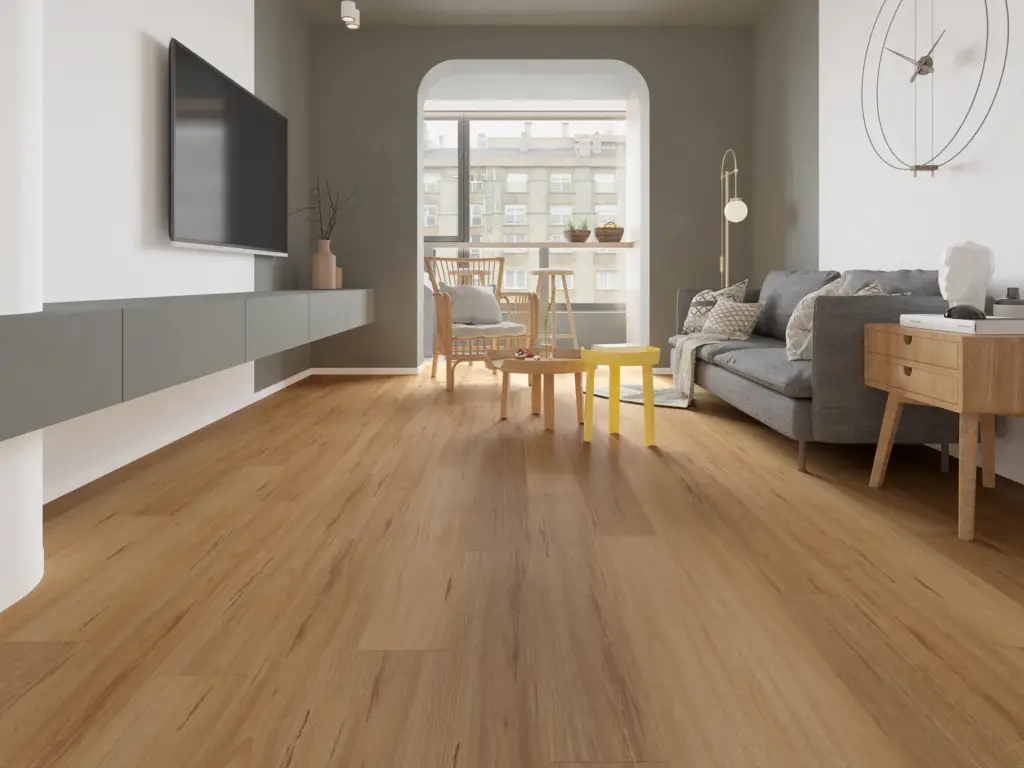
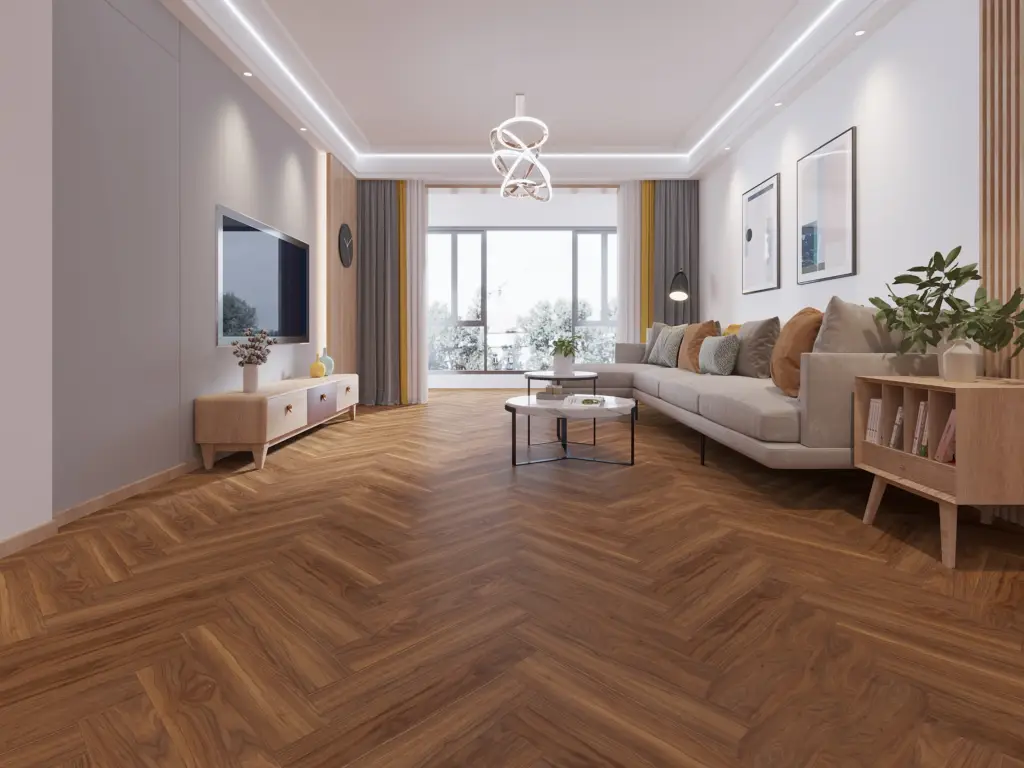
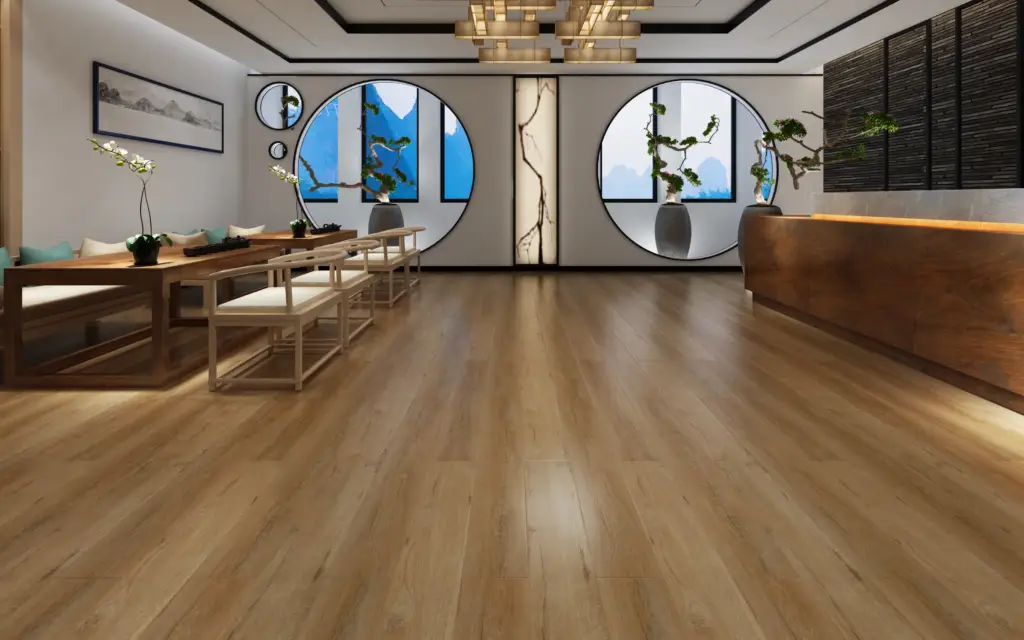
SPC and Laminate Key Difference
The key difference between SPC and laminate flooring lies in the core materials. SPC flooring features a core made from a mixture of limestone and PVC-based resin, known as Stone Plastic Composite.
Laminate flooring, on the other hand, has a core made of High-Density Fiberboard (HDF), which is composed of compressed wood fibers.
ما هي أرضيات SPC؟
SPC flooring stands for Stone Plastic Composite flooring. It is made from a mixture of limestone powder, polyvinyl chloride (PVC), and stabilizers, resulting in a highly durable and water-resistant core.
This type of flooring is known for its robustness, making it ideal for high-traffic areas and spaces prone to moisture, such as kitchens and bathrooms.
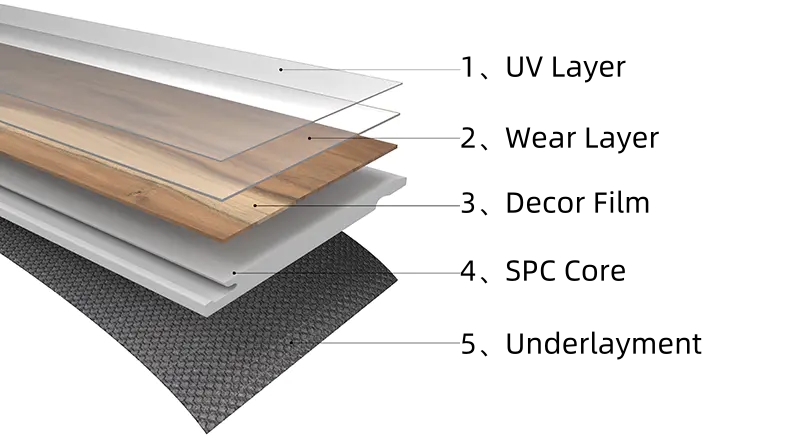
Advantages of SPC Flooring
- Durability: SPC flooring is highly resistant to scratches, dents, and general wear and tear, with a potential lifespan of 20-30 years or more.
- Waterproof: SPC flooring is 100% waterproof, making it suitable for areas exposed to moisture, such as bathrooms, kitchens, and basements.
- Low Maintenance: It is easy to clean with regular sweeping and occasional damp mopping. The dense, non-porous surface prevents most spills from setting in.
- Stability: SPC flooring does not expand or contract significantly with temperature changes or humidity, ensuring a consistent feel underfoot.
- DIY-Friendly: Most SPC flooring features a click-lock system, making it easy to install without professional help.
- Design Versatility: High-definition printing technology allows SPC flooring to mimic the look of wood, stone, and other materials, offering a wide range of aesthetic options.
What is Laminate Flooring?
Laminate flooring consists of a high-density fiberboard (HDF) core made from compressed wood fibers. It is topped with a photographic layer that mimics the appearance of wood, stone, or other materials, and a protective wear layer. Laminate flooring is popular for its affordability and ease of installation, making it a common choice for living rooms and bedrooms.
Advantages of Laminate Flooring
- Affordability: Laminate flooring is generally more affordable than SPC flooring, making it a budget-friendly option for many homeowners.
- Ease of Installation: Laminate flooring also uses a click-lock system, making it easy to install, even for DIY enthusiasts.
- Aesthetic Variety: Laminate flooring comes in a wide range of designs and styles, allowing homeowners to achieve the look of wood, stone, or other materials at a lower cost.
- Durability: While not as durable as SPC, laminate flooring offers good resistance to scratches and wear, especially in areas with moderate foot traffic.
- Comfort: The HDF core provides a comfortable underfoot feel, making it suitable for living areas and bedrooms.
Summary
SPC and laminate flooring each offer unique benefits that cater to different needs and preferences. SPC flooring excels in durability, water resistance, and low maintenance, making it ideal for high-traffic and moisture-prone areas. Laminate flooring, on the other hand, is more affordable and easier to install, making it a great choice for dry areas with moderate foot traffic. By understanding the core differences and evaluating your priorities, you can select the flooring that best meets your needs and enhances the beauty and functionality of your home.


